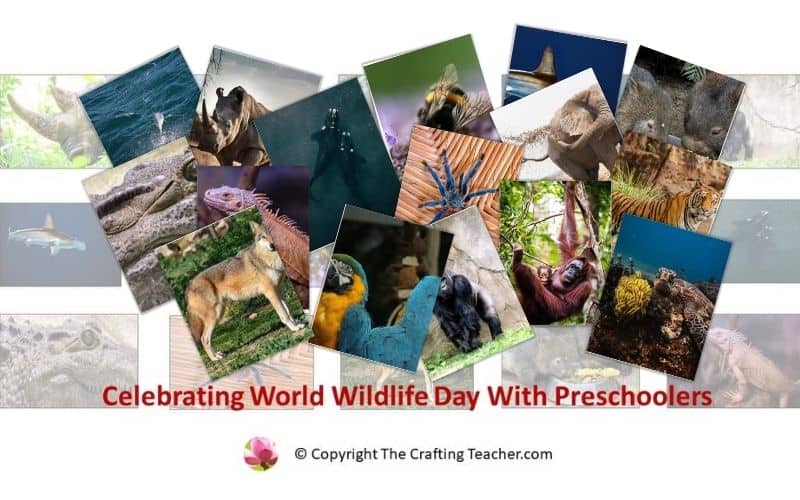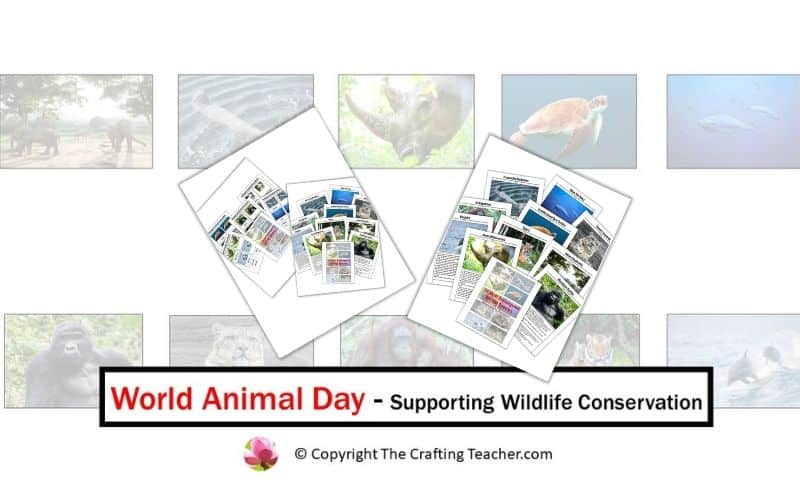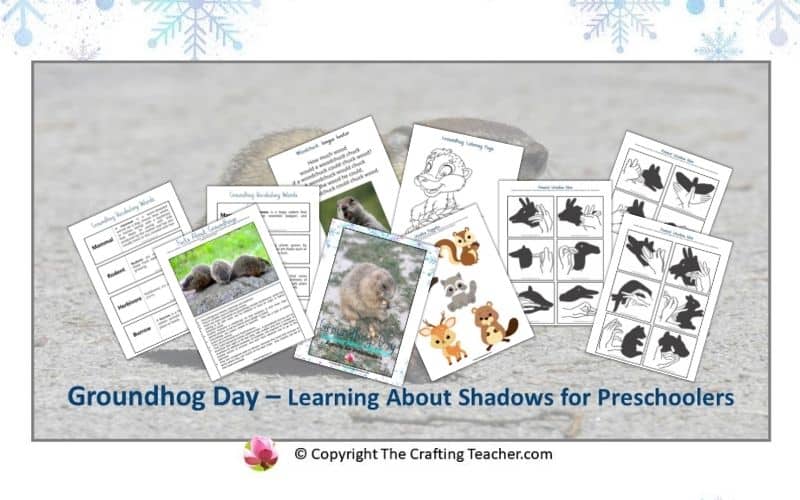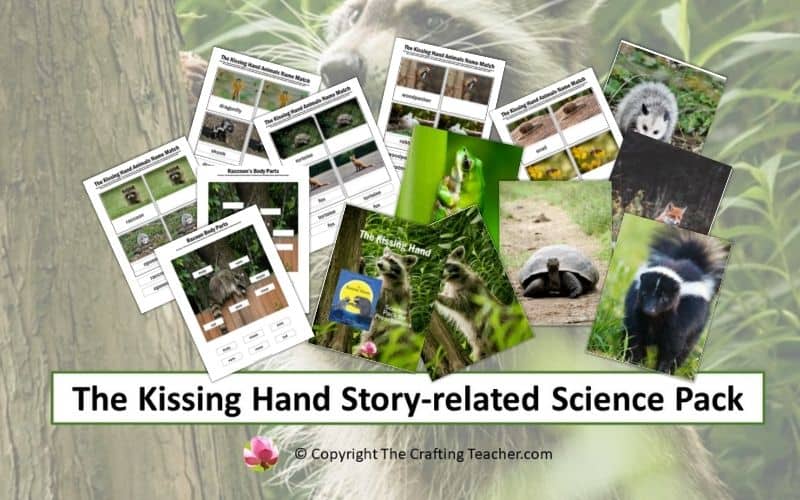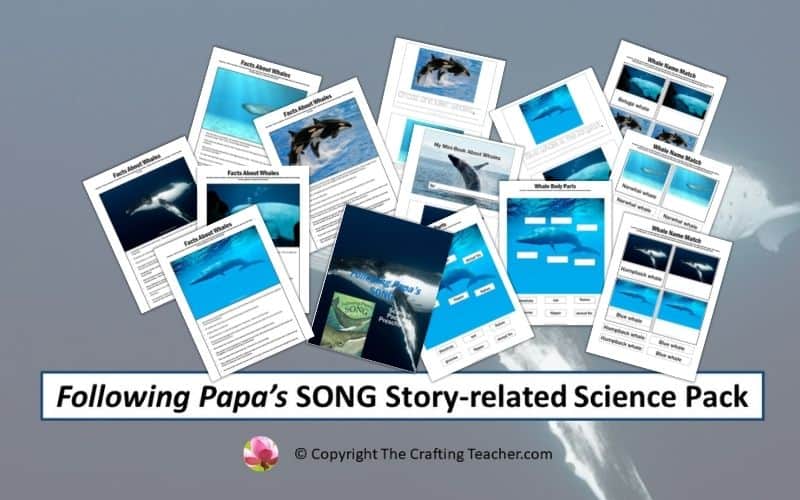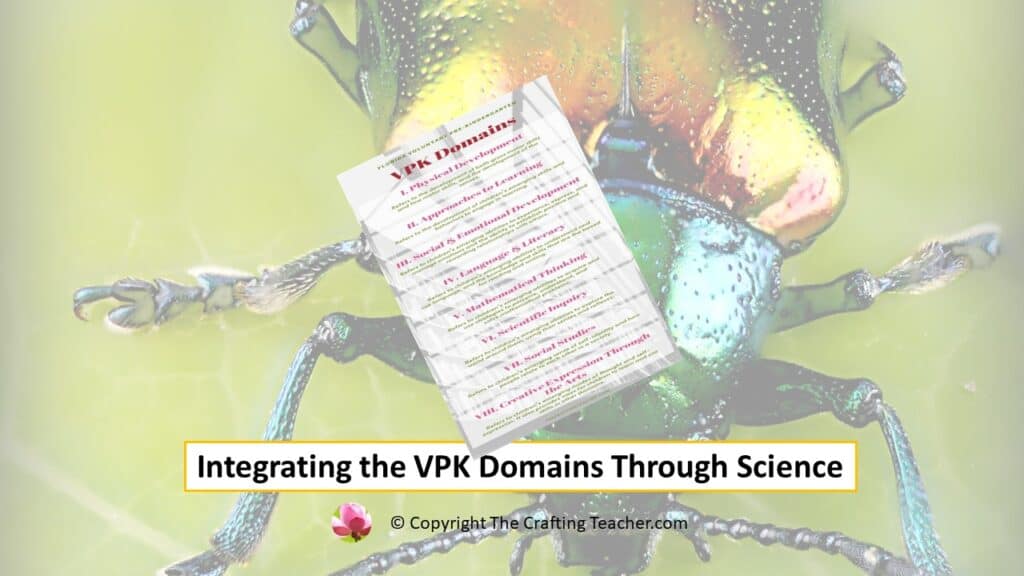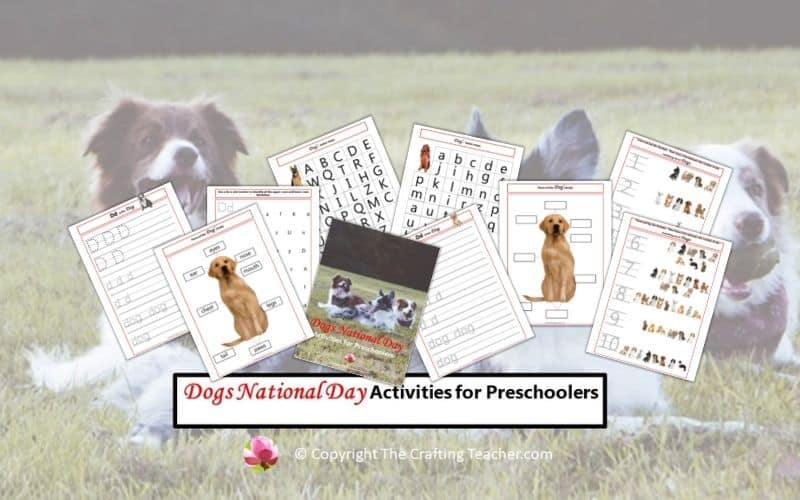Celebrating World Wildlife Day With Preschoolers
Affiliate Disclosure: “This post contains affiliate links, which means I receive a small commission, at no extra cost to you, if you make a purchase using those links.”
World Wildlife Day (WWD) occurs on March 3 every year, and it’s dedicated to celebrating all life on our planet. This event is regarded as the most important to “raise awareness about threatened and endangered plants and animals”.
This year, World Wildlife Day will be celebrated under the theme “Recovering key species for ecosystem restoration”, to draw attention to the most critically endangered species of wild fauna and flora, and to try to come up with solutions to converse them.
Why? Because according to the 2020 Living Planet Report, “there has been a 68% average decline of birds, amphibians, mammals, fish, and reptiles since 1970.” We are losing biodiversity at an alarming rate, and we have to do something about it, the loss of species, habitats, and ecosystems threatens all life on Earth. We are all connected and depend on each other.
If we humans want to be selfish, we just have to think that we rely on this planet’s resources to meet our needs for food, medicines, housing, fuel, and clothing. If they disappear, we won’t be able to survive. Have you seen any of those movies where the entire planet becomes a desert? I have, and it’s horrible.
According to data from the International Union for Conservation of Nature (IUCN) Red List of Threatened Species, “over 8,400 species of wild fauna and flora are critically endangered, while close to 30,000 more are understood to be endangered or vulnerable. Based on these estimates, it is suggested that over a million species are threatened with extinction.” That is terrifying!!!
It is urgent that we do everything in our power to protect all wildlife, especially the most critically endangered species, and that we make every effort to support the restoration of their habitats and ecosystems. It’s the least we can do since we humans are the ones that caused all this destruction.
Let us remind ourselves that we are part of nature, and it is our responsibility to preserve all life on our planet. Let’s be more caring, respectful, and involved. We owe it to every other species that we share the planet with.
How to Get Involved
The threats to wildlife and biodiversity are very complex, but if we all make an effort to help, our actions add up and can make a difference. There are many ways for you and everybody else to help, wherever you are. These are some of the ideas:
- Start by teaching and promoting in your preschoolers the love for wildlife and how they can make a difference. Make a habit of talking to them frequently. Do not limit the information just to this day. Your little learners could very well be future conservationists.
Use these FREE posters to spread the word about 16 of the most critically endangered species in the world. You can get them at the end of this post.
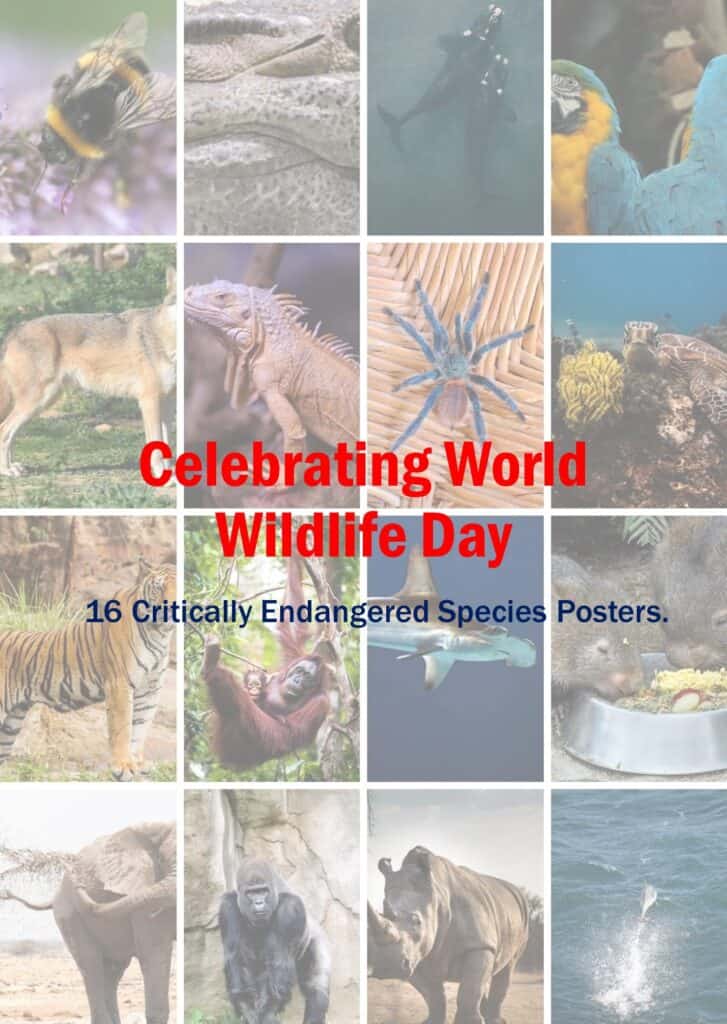
- Plant a pollinator garden at your school and home, and have your preschoolers participate in the planting and care of these plants. You might even have monarch butterflies visiting, which is one of the most endangered species. It can give you beautiful teachable moments.
- Start a recycling campaign. Have a recycle bin and a trash bin set up, and have your students divide the trash. That will also train and encourage them to recycle. You can even use the recycled items to do activities in the classroom.
- Start a fundraiser to donate to organizations that are working to help endangered species such as the World Wildlife Fund. Even a small donation can go a long way in helping the situation.
- Use your newspaper, or letter to parents and your preschoolers to educate them on how to protect wildlife by including in their routine things like reducing the use of water to avoid depleting the reservoirs, placing decals on windows to avoid bird collisions, using non-toxic pesticides and herbicides, watching for wildlife crossing the roads when driving, closing trash cans to avoid the hazard, cutting off the elastic on the masks to avoid animals getting tangle up with them, not throwing trash in rows, parks, oceans, lakes, and rivers, and avoid the use of plastic and straws as much as possible.
- Spreading the word of this year’s theme, “Recovering key species for ecosystem restoration“. Post it on your social media, and share it with your friends and families, your peers and students, and your neighbors, everywhere.
- Find out which are the most the species in your area, and contact the wildlife conservation office to investigate what you can do to help protect them.
- Volunteer at your local wildlife rescue center, park, animal rescue, and other places that house and protect different species. Normally these places survive on donations and the service of volunteers. You can make a difference.
- Get in contact with conservationists around the world who work very hard every day to protect these species and ecosystems. Nothing is far if you use the internet. Find out how you can help.
- Use the hashtags created for this year’s celebration: #WWD2022, #RecoverKeySpecies, #worldwildlifeday.
- Organize your celebration virtually or in person, using your expertise. How? If you are an artist do an art show, a talk show, a newspaper article, post posters, and talk to people. Creating awareness can take many forms, and everything helps. You can even register your events on the wildlifeday.org website.
- Become a well-informed advocate of wildlife conservation learning everything you need to know about how you can make a difference by visiting the website of the Convention on International Trade in Endangered Species, or Wild Fauna and Flora (CITES).
- Find out more about vulnerable or endangered species by visiting the IUCN Red List of Threatened Species, and becoming an advocate for them. According to this list, right now “there are more than 142,500 species on The IUCN Red List, with more than 40,000 species threatened with extinction, including 41% of amphibians, 37% of sharks and rays, 34% of conifers, 33% of reef-building corals, 26% of mammals and 13% of birds”.
The World Wildlife Organization offers you a large number of free resources you can use. Maybe some of them are a little advanced for preschoolers, but I’m sure you can get some information and adapt it for your particular case.
Remember that knowledge is power. The more you know, the more you can spread the word and make a difference. We humans are the ones destroying our world, if we get together and work hard to turn this around, our planet will survive and thrive again.
We already lost thousands of species. They will never be seen again. Let’s protect the ones that are still here.
Pin It for Later
If you are in a rush and don’t have time to read the post and download the printable but want to save it for later, pin it to one of your Pinterest boards, so you can have it available when you need it.
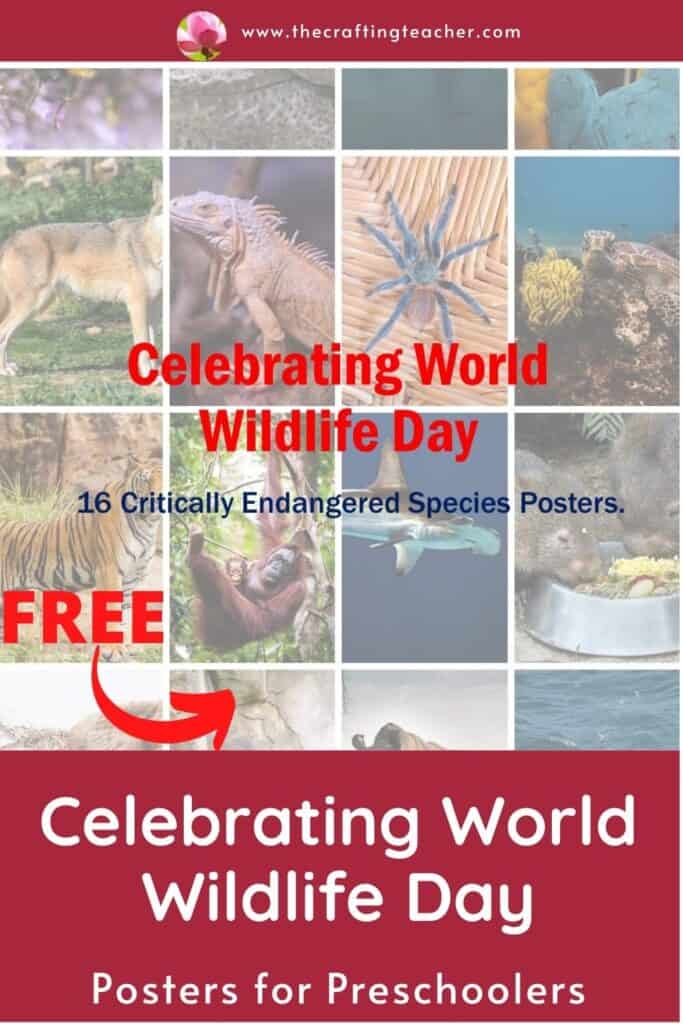
Use this day as the beginning of your journey in this fight to start raising awareness about this issue, if you haven’t started it yet. Remind your children of the importance of protecting our environment and everything in it, every day! This is not a matter of just mentioning this problem and forgetting about it. The only way that we can make a difference is by imprinting this knowledge in our future generations to become wildlife defenders and advocates for life.
Here are your FREE posters. Use them to teach, inform, and defend wildlife. Just click on the link below to get them.
Be happy, safe, and creative. I wish you well.
Love,

P.D. Please let me know if you like any of these ideas worked for you, or if you came up with others. I will love to post them as well.

